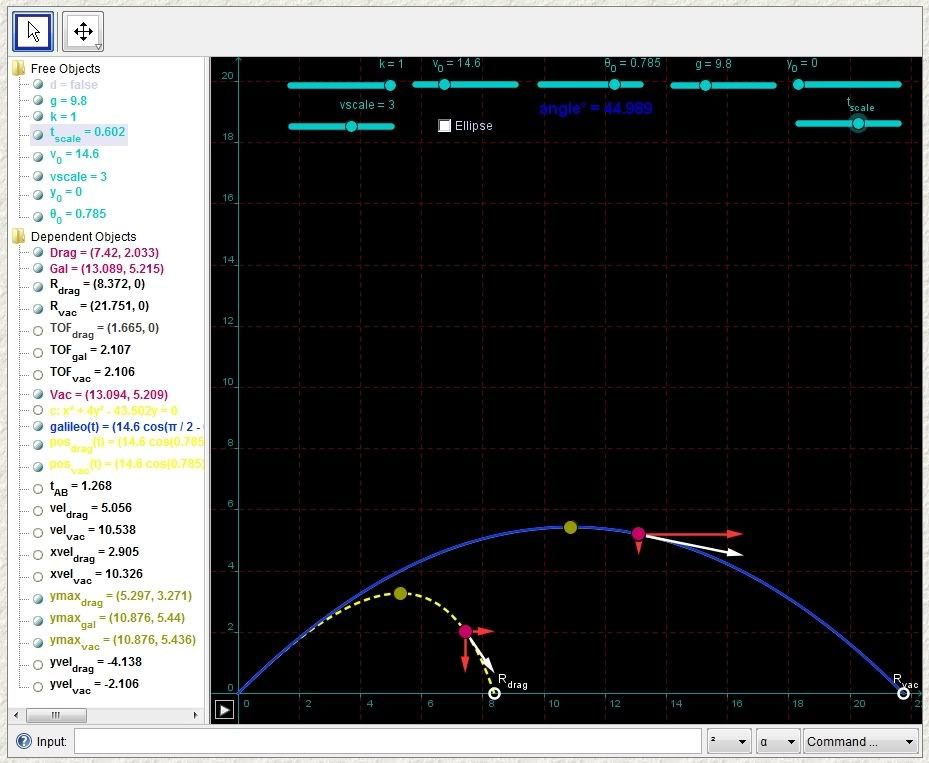Wouldn't a bullet fired up whether straight, 45° angle or any other angle come down straight once it reaches it's maximum hight. I can't pitcure it going up at an 45° angle and then branch off and come down at another angle making a tri-angle of sorts.
There are two components to a bullet's velocity, the vertical and the horizontal, and they are independent. Gravity only influences the vertical, but air resistance influences both the horizontal, although for all practical purposes, their effects can be separated into their vertical and horizontal components.
Subsonic air resistance is proportional to the square of the velocity. At terminal velocity, the air resistance is equal to the weight of the bullet.
The horizontal component will decay towards zero, but it never actually gets there as air acts like an under-damped system.
If gravity were parallel over distance, the trajectory would be a parabola in a vacuum. But gravity acts from a point source, the center of mass of the Earth, so if the projectile doesn't have escape velocity, the trajectory follows an ellipse, not a parabola, as is commonly, but wrongly taught. If the projectile's velocity is equal to or greater than escape velocity, it follows a hypotenuse.
Back to our bullet... Because of air resistance, it follows a warped ellipse:
The larger blue curve is the ellipse of a projectile in a vacuum. The smaller, yellow-dashed curve is the same projectile in an atmosphere. The red dots are where each bullet would be after the same amount of time for each curve. The red arrows are the horizontal and vertical velocity components, drawn to scale.
The horizontal velocity component for the vacuum projectile never changes. But for the atmosphere projectile it starts out equal, but is reduced at a rate that's proportional to the square of its velocity. At the time of the red dots, it's a lot less than for the bullet in a vacuum. Meanwhile, atmospheric drag has impacted its vertical velocity. It reaches only a fraction of its vacuum brother, and may very well reach terminal velocity before impacting the ground.
How do I know so much about this? Well, aside from a background in aerospace engineering, I dropped things out of the sky for twenty years. The physics are the same, whether it's a bullet, a paratrooper, a pallet full of beans and bullets, or a string of 500 pound bombs.
I hope you enjoyed the full explanation!

